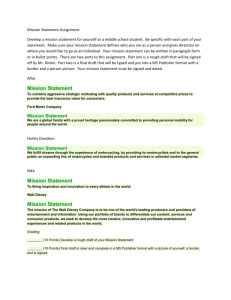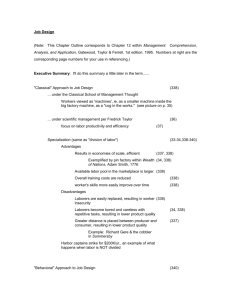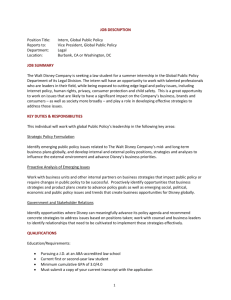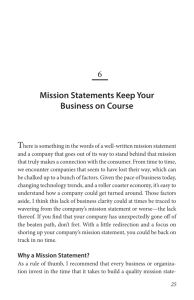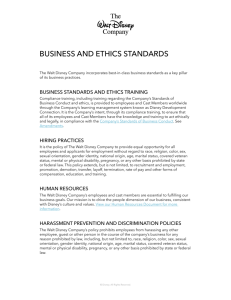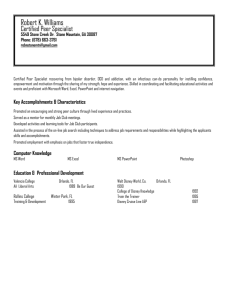Class 17 10/25 Organization and Communications Power Point
advertisement
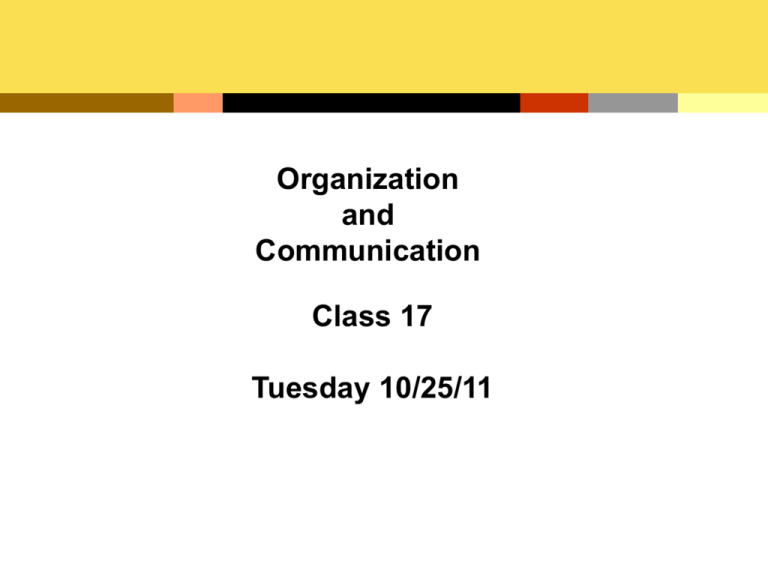
Organization and Communication Class 17 Tuesday 10/25/11 Organizational Culture • Corporate culture – Shared values – Beliefs – Traditions – Philosophies – Rules – Role models for behavior How is Corporate Culture Expressed? Formally Informally How is Corporate Culture Expressed? • Formally – Mission statement – Codes of ethics – Memos, manuals – Ceremonies • Informally – Dress codes (or the lack thereof) – Work habits – Extracurricular activities – Water cooler Developing Organizational Structure • • Structure is the arrangement or relationship of positions within an organization, and developed by: – Assigning work tasks and activities to specific individuals or work groups – Coordinating the diverse activities required to reach the firm’s objectives Organizational structure is depicted through organizational charts What’s Assigned & Distributed? • Authority • Responsibility • Accountability Assigning Tasks • Specialization – The division of labor into small, specialized tasks and the assignment of single tasks to employees • Departmentalization – Departmentalization is the grouping of jobs into working units usually called departments, units, groups, or divisions • Functional departmentalization • Product departmentalization • Geographical departmentalization • Customer departmentalization Span of Management • The number of subordinates who report to a particular manager – A wide span of management exists when a manager directly supervises a very large number of employees. – A narrow span of management exists when a manager directly supervises only a few subordinates Organizational Layers • Organizational layers are the levels of management in an organization – Flat organizations have few layers and have wide spans of management – Tall organizations have many layers and have narrow spans of management Span of Management: Wide Span and Narrow Span Forms of Organizational Structure • Line • Line-and-staff • Multidivisional • Matrix An Example of Multidivisional Structure: The Walt Disney Company CEO Walt Disney Attractions Motion Pictures Walt Disney World Magic Kingdom CA Disney Stores Magic Kingdom FL Epcot Center Walt Disney Studios TV Tokyo Disneyland Licensing DisneyMGM Studios Animation Consumer Products Disney Channel EuroDisney Publishing Disney Music Software and Education Catalog Marketing Source: The Walt Disney Company Annual Report The Role of Groups and Teams in Organizations • A group – Two or more individuals who communicate with one another, share a common identity, and have a common goal • A team – A small group whose members have complementary skills; a common purpose, goals, and approach; and who hold themselves mutually accountable Characteristics of Teams • Teams are accountable for achieving specific common goals • Teams function interdependently • Teams are stable • Teams have authority What Makes Teams Effective? • Reliance on one another • Trust among team members • Team members work better together than separately • Team members become boosters • Members derive satisfaction from being on the team • Leadership rotates – teams function effectively when leadership responsibility is shared over time Why Teams Fail – Obstacles to Success • Unwillingness to cooperate – members don’t commit to a common goal or set of activities • Lack of Managerial Support • Failure of managers to delegate authority • Failure of teams to cooperate – a company really is a team-based organization and requires cooperation among teams to achieve stated goals Flow of Formal Communication in an Organization • Communication flow – – – – Upward Downward Horizontal Diagonal The Flow of Communication in an Organizational Hierarchy Informal Communication • The informal organization – Friendships and other nonwork social relationships • The most significant informal communication occurs through the grapevine • May relate to the job or organization • May be gossip and rumors unrelated to either Protocol for Handling Issues • Peer with a Peer • Subordinate with a Supervisor • Supervisor with a Subordinate
